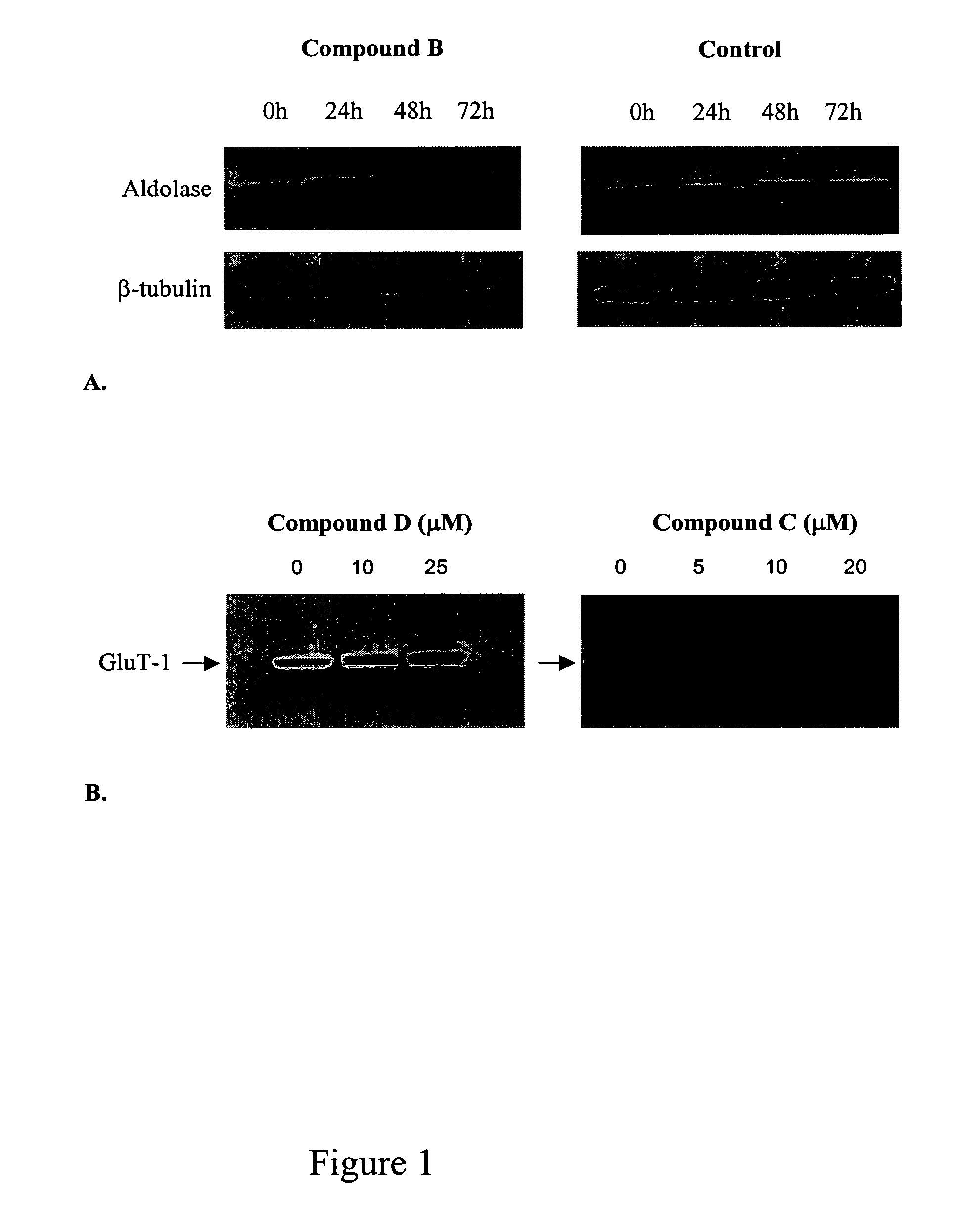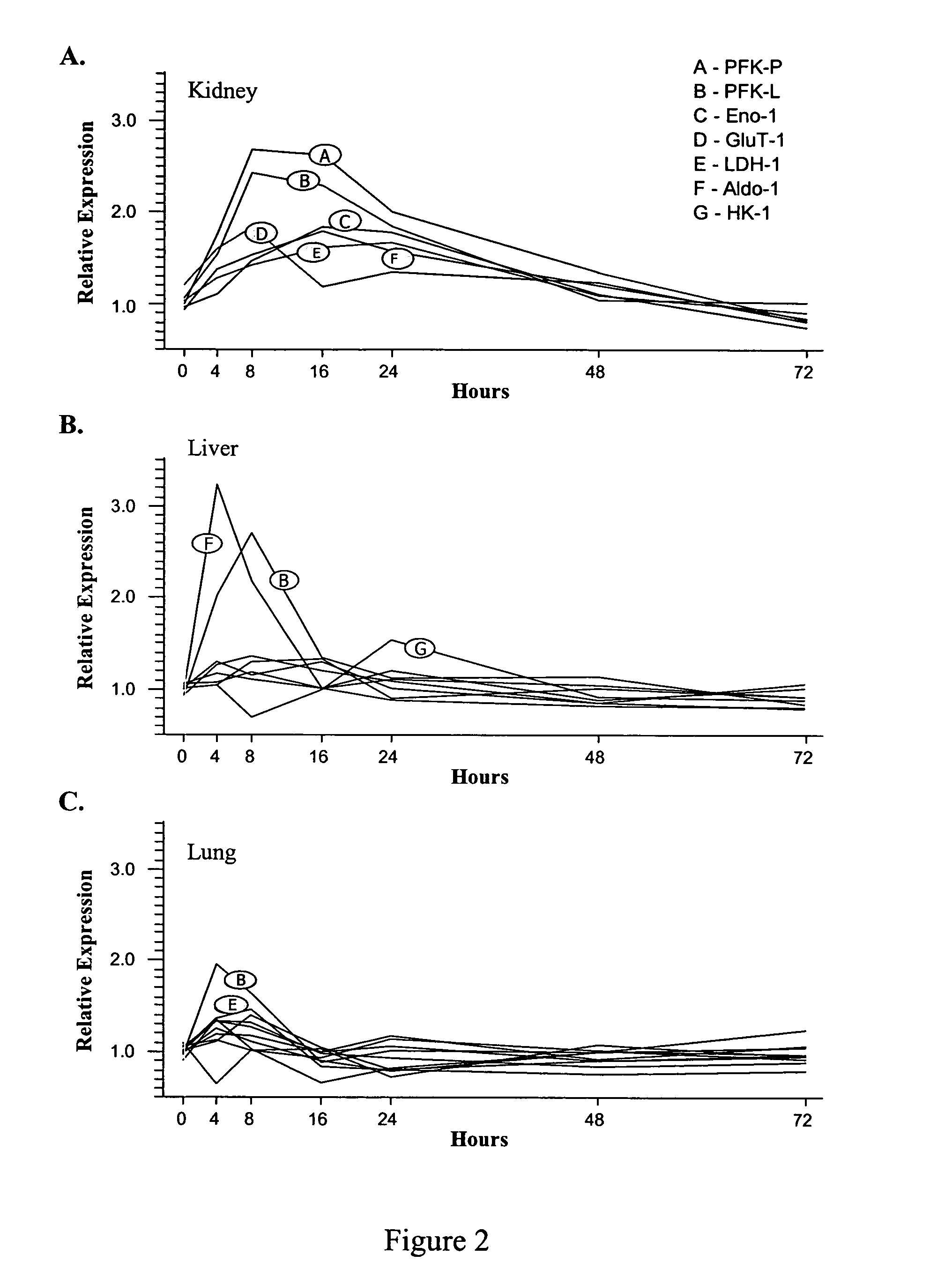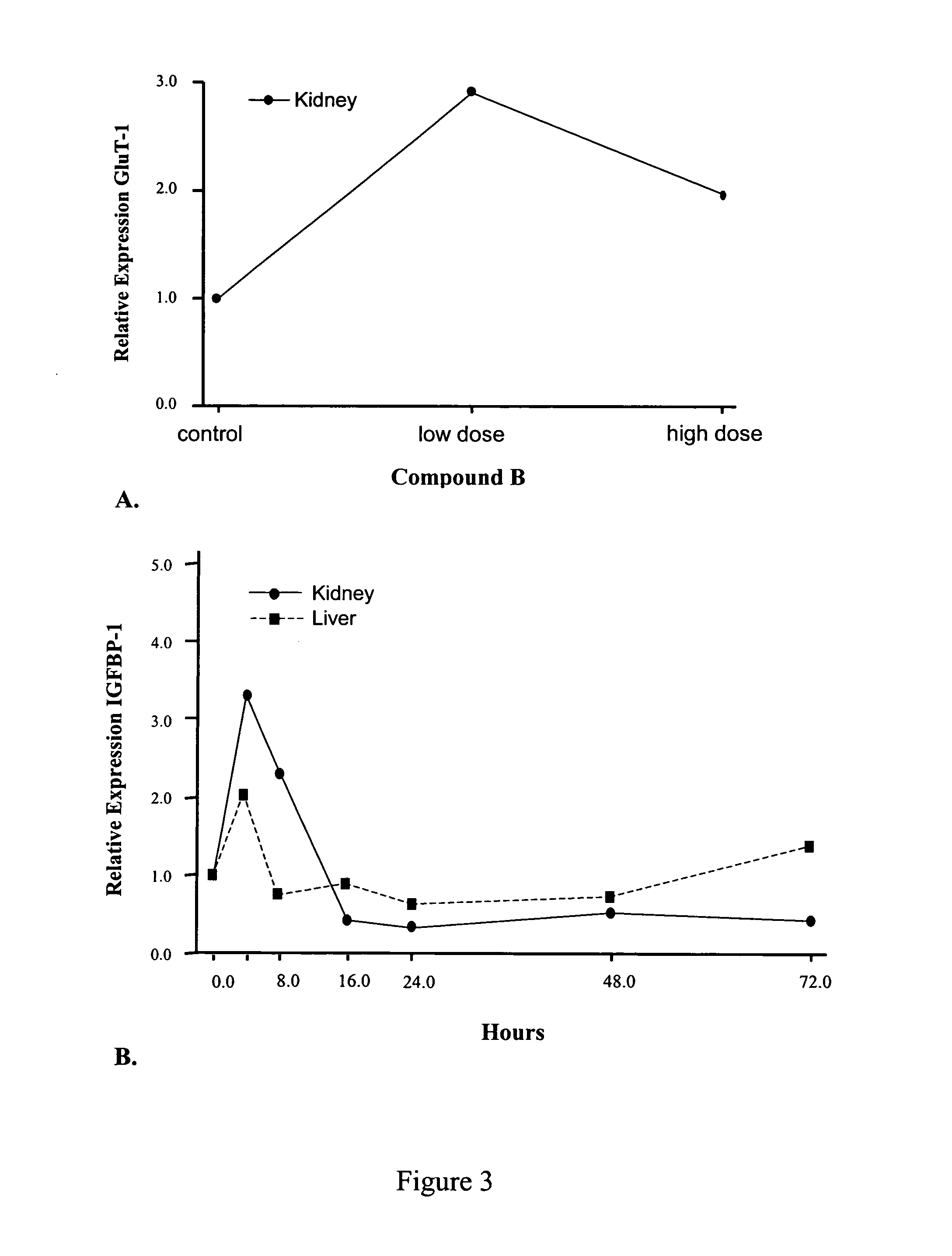Treatment of diabetes
a technology for diabetes and homeostasis, applied in the field of glucose regulation and homeostasis, can solve the problems of loss of glucose regulation control, severe complication of quality of life, and even death, and achieve the effects of reducing insulin resistance, reducing glycated hemoglobin levels, and reducing blood glucose levels
- Summary
- Abstract
- Description
- Claims
- Application Information
AI Technical Summary
Benefits of technology
Problems solved by technology
Method used
Image
Examples
example 1
Test Materials
[0148]In general, compounds representing prolyl hydroxylase inhibitors used in the methods of the invention were synthesized by standard chemical methods known to those of skill in the art. Compounds were analyzed for purity by high pressure liquid chromatography and stored at room temperature protected from light. During formulation for various uses, compounds were micronized in suspension at 750 rpm for 20 minutes using a PULVERISETTE 7 planetary micro mill (Fritsch GMBH, Germany) to facilitate uniform particle size.
[0149]Suspensions of micronized compound for oral gavage were prepared immediately before use. Compound was suspended in aqueous solution containing 0.5% sodium carboxymethylcellulose (CMC; Spectrum Chemical, Gardena Calif.), 0.1% polysorbate 80 (Mallinckrodt Baker, Inc., Phillipsburg N.J.) and stirred constantly using a magnetic stirrer or rotary shaker during dose administration. The concentration of the suspensions was calculated to achieve the intende...
example 2
Increased in vitro Expression of Glucose Regulatory Factors
[0151]The effect of compounds of the present invention on expression of proteins and genes involved in glucose regulation and metabolism as follows. Human 293A cells (adenovirus-transformed fetal kidney epithelium) were plated confluent in 35 mm culture dishes and cultured for 1 day at 37° C., 10% CO2 in DMEM containing 5% FBS and 1% penicillin-streptomycin. The media was changed to Opti-Mem I and incubation was continued for an additional 18 to 24 hours. Vehicle control or compound B was then added to the media and cells were incubated for an additional 24, 48 or 72 hours. Plates were placed on ice, culture supernatant was removed, and lysis buffer-1 (LB-1: 10 mM Tris pH 7.4, 1 mM EDTA, 150 mM sodium chloride, 0.5% IGEPAL) was added. Cell lysates were harvested by scraping, incubated for 15 minutes on ice, and then fractionated by centrifugation at 3000×g for 5 minutes at 4° C. The supernatant, which represented the cytosol...
example 3
Increased in vitro Expression of Glucose Transporter (GluT)-1
[0155]Human SSC-25 (squamous cell carcinoma) or rat H9c2 (ventricular cardiomyocyte) cells were grown to confluence in 100 mm culture dishes at 37° C., 10% CO2 in DMEM with 10% fetal calf serum. Cells were then washed twice with PBS and incubated with vehicle control, compound D (10 and 25 μM), or compound C (5, 10, and 20 μM) for 16 hours. Plates were placed on ice, culture supernatant was removed, and lysis buffer-1 (LB-1: 10 mM Tris pH 7.4, 1 mM EDTA, 150 mM sodium chloride, 0.5% IGEPAL) was added. Cell lysates were harvested by scraping, incubated for 15 minutes on ice, and then centrifuged at 3000×g for 5 minutes at 4° C. The supernatant, which represents the cytosolic fraction, was collected and cytosolic proteins were separated under reducing conditions using SDS-polyacrylamide gel electrophoresis (SDS-PAGE) with equal amounts of protein loaded per lane.
[0156]SDS-PAGE was conducted at 150 V for 2 hours, after which ...
PUM
| Property | Measurement | Unit |
|---|---|---|
| volume | aaaaa | aaaaa |
| volume | aaaaa | aaaaa |
| pH | aaaaa | aaaaa |
Abstract
Description
Claims
Application Information
 Login to View More
Login to View More - R&D
- Intellectual Property
- Life Sciences
- Materials
- Tech Scout
- Unparalleled Data Quality
- Higher Quality Content
- 60% Fewer Hallucinations
Browse by: Latest US Patents, China's latest patents, Technical Efficacy Thesaurus, Application Domain, Technology Topic, Popular Technical Reports.
© 2025 PatSnap. All rights reserved.Legal|Privacy policy|Modern Slavery Act Transparency Statement|Sitemap|About US| Contact US: help@patsnap.com



